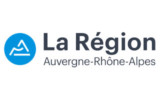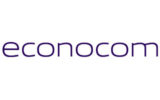How to reduce the water usage of data center cooling systems
Along with energy, reducing water usage is another challenge that data center operators must address. Both issues are inextricably linked, and it is essential to consider the consequences for one before acting on the other. Each data center is unique, and its balance of resource usage, operating costs, and environmental footprint must be studied on a case-by-case basis.
Water usage in data centers
In data centers, water is almost exclusively used for cooling IT equipment rooms. Most data centers use a chilled water circuit to absorb the heat generated by IT equipment. The water is chilled by cooling units powered by electricity or, sometimes, by cool air from the outside using a “free-chilling” system. The cold water, which is used to blow cool air over the IT equipment, warms up as it passes through the IT equipment rooms and returns to the cooling units, and thus the cycle continues. The chilled water circuit operates in a closed loop. As such, it only starts using water once the data center begins operating.
Technologies such as “free-cooling” systems cool down data centers without using water. They capture cool air directly from outside, which is vented into the IT equipment rooms.
Water usage only increases in data centers when external temperatures rise above a certain threshold, increasing the need for cooling. Under such conditions, in addition to other cooling systems in place (cooling units, free-chilling, and free-cooling), some data centers use a system that sprays droplets of water (known as adiabatic cooling) to cool down the air by a few additional degrees.
With this method, some of that water evaporates, helping avoid the need for larger cooling equipment that consumes more energy. And the numbers can be significant: for example, in its 2022 environmental report, Microsoft announced that it had consumed 6.4 million m³ of water across all of its data centers worldwide. That’s the equivalent of 2,500 Olympic-sized swimming pools with a depth of 2 meters. Google, on the other hand, revealed that all of its data centers together consumed 15 billion liters of water in 2021. Increased usage of digital technology and the increased concentration of servers within IT equipment rooms (with the growth of AI, for example) mean that data centers have ever-growing needs for cooling.
Just a few years back, water was not viewed as a precious resource, especially not in temperate regions of the world. Data center operators preferred to increase their water consumption rather than their electricity consumption to cool their IT equipment rooms. However, the climate change we are now seeing has made water a scarcer resource. At the same time, there is increasing demand for water, especially in very densely-populated areas for a number of uses, including water for drinking, for hygiene, for agriculture, for industry , etc.
Adiabatic cooling of data centers: what are the alternatives?
To reduce water usage tied to adiabatic cooling, there are now many alternatives or “work-around” solutions.
In particular, to reduce the need for cooling, data center operators often work on:
- Increasing the operating temperatures of IT equipment rooms, by using equipment capable of withstanding higher operating temperatures than in the past;
- Improving the management of flows of hot and cold air in IT equipment rooms;
- The layout of equipment in rooms in order to rationalize the space and limit the volumes that need to be cooled.
However, these solutions don’t solve everything: cooling remains necessary. Because of this, the data center industry is searching for lasting, innovative solutions to generate the smallest-possible impact on the environment and limit water usage:
- Increased production of cold from cooling units: this solution significantly increases the electricity usage of cooling units, but it supplies the required cooling capacity without consuming more water.
- River cooling: depending on the geographical location of the data center, it may be possible to use surface water for cooling. The water taken in is returned without being stored. As such, this solution does not deplete rivers or groundwater. However, care has to be taken to ensure that the warmer water that’s returned does not disturb natural ecosystems. Also, this solution requires government permission.
- Direct liquid cooling: a circuit of water passes directly through the servers to cool them. This system is very effective because it brings the water as close as possible to the equipment producing the heat, and it doesn’t waste any water because the circuit is closed. However, it requires special IT equipment.
- Immersion cooling: the IT equipment is immersed in tanks of water or oil to more efficiently remove the heat produced. This cooling method does not waste water (closed circuit), but it requires adjustments on an organizational level and to equipment, as well as new skills for the employees managing the equipment.
Additionally, data centers, like other types of buildings, can also reuse certain types of water, such as collected rainwater, as long as they adequately treat and filter the water. However, in the case of reusing rainwater, they run the risk of being criticized for capturing water and diverting it from groundwater.
Data centers: striking a balance between geography, economics, and the environment
We can no longer do without digital services. In fact, they are being used more than ever before, and companies are having to add more and more IT equipment, particularly with the development of artificial intelligence, which requires massive computing power. That means more and more servers and data centers, and thus a greater need for cooling.
While there are alternatives to adiabatic cooling—which, incidentally, can also be combined with other solutions—all these alternatives may not necessarily be possible or relevant depending on the location of the data center (geographical location, whether or not it’s a dedicated building, etc.), including its surroundings (presence of surface water, usage of waste heat for heating, etc.).
More generally, a company needs to conduct studies in advance of new construction or renovation projects in order to determine the right dimensions and the solutions that can be used to reduce the building’s environmental footprint. They also need to take into account the trade-offs of environmental impacts when selecting an alternative cooling solution. For example, reducing water consumption while increasing electricity consumption in a country where electricity is produced by burning fossil fuels, leading to greater greenhouse gas emissions, is not an eco-friendly choice.
By Jessica Le Goff, Sustainable IT Project Manager, APL Data Center.
APL, expert in data center
Created in 1983, APL is the leading consulting and engineering firm specialized in the design and construction of data centers.
They trust us


















